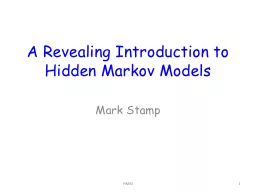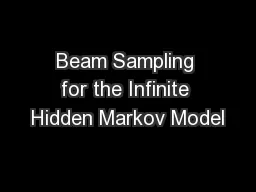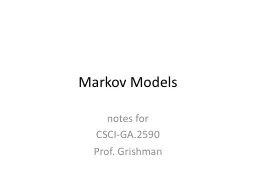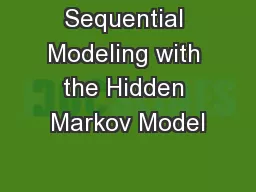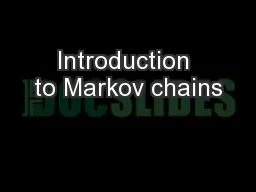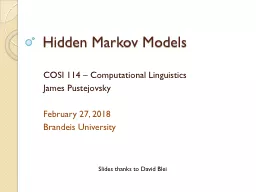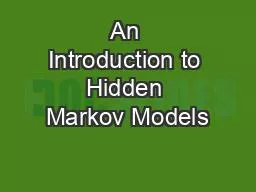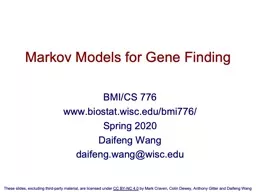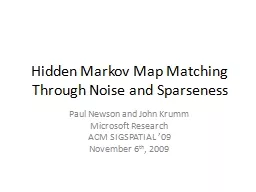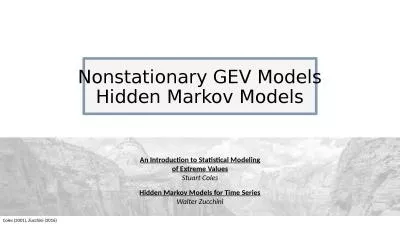PPT-A Revealing Introduction to Hidden Markov Models
Author : ellena-manuel | Published Date : 2017-05-02
Mark Stamp 1 HMM Hidden Markov Models What is a hidden Markov model HMM A machine learning technique A discrete hill climb technique Where are HMMs used Speech
Presentation Embed Code
Download Presentation
Download Presentation The PPT/PDF document "A Revealing Introduction to Hidden Marko..." is the property of its rightful owner. Permission is granted to download and print the materials on this website for personal, non-commercial use only, and to display it on your personal computer provided you do not modify the materials and that you retain all copyright notices contained in the materials. By downloading content from our website, you accept the terms of this agreement.
A Revealing Introduction to Hidden Markov Models: Transcript
Download Rules Of Document
"A Revealing Introduction to Hidden Markov Models"The content belongs to its owner. You may download and print it for personal use, without modification, and keep all copyright notices. By downloading, you agree to these terms.
Related Documents

